In this post I have explained how a neat little self regulating automatic battery charger circuit can be made using just two inexpensive transistors.
This circuit will automatically regulate the charging supply to the battery depending on its charge level, by switching the input supply ON and OFF periodically.
How it Works
As can be seen in the diagram, this auto-regulating battery charger circuit utilizes just two transistors for detecting the charging thresholds, and cuts off the process as soon as these limits are detected.
Using two transistor actually makes the design hugely sensitive compared to a single transistor charger circuit.
The indicated preset is set in such a way that the T1 is just able to conduct at the specified full charge threshold of the battery.
When this happens T2 begins switching OFF, and ultimately at a point it is unable to sustain the relay conduction and switches OFF the relay, which in turn cuts of the input charging source with the connected battery.
Conversely, when the battery voltage begins dropping, T1 gradually deprived of its adequate conduction voltage level, and ultimately it ceases to conduct, which quickly prompts T2 to initiate its conduction and trigger the relay into action,
The relay now reconnects the charging input supply with the battery, and restores the charging process until it yet again reaches the full charge threshold, when the regulating cycle repeats itself.
How to Sep Up the Circuit
Setting up this battery charger circuit for automatic regulation is very simple and may be done in the following way:
- Initially, do not connect the fixed transformer power supply; instead connect a 0-24V, variable supply voltage to the circuit.
- Remove the anode of D6 from the relay contact and connect it to the positive of the power supply.
- Keep both the presets somewhere at the center position.
- Switch ON the power and adjust the voltage to 11.5 volts or lower.
- Adjust P2, so that the relay just activates.
- Now increase the volts to about 13.5 volts, and adjust P1 so that the relay just deactivates.
The setting procedure of the circuit is now complete.
Check the whole procedure by continuously varying the voltage up and down.
You may now remove the variable power supply and connect the fixed transformer, bridge power supply to it.
DON’T FORGET TO RECONNECT THE ANODE OF D6 BACK TO THE RELAY CONTACT OR THE BATTERY POSITIVE.
The battery connected to this circuit will be charged only as long as its voltage is in between the above "window" level.
If the battery voltage crosses the above "window", the relay will trip and stop the battery from charging.
Parts List
- R1, R2 = 10K = 2
- P1, P2 = 10K PRESET = 2
- T1, T2 = BC 547B = 2
- C1 = 2200uF/25V = 1
- C2 = 47uF/25V (Please connect this capacitor across the relay coil) = 1
- D1---D4 = 1N5408 = 4
- D5, D6 = 1N4007 = 2
- RELAY = 12 VOLT, SPDT = 1
- TRANSFORMER = 1, (AS PER THE CONNECTED BATTERY AH (DIVIDE BY 5)
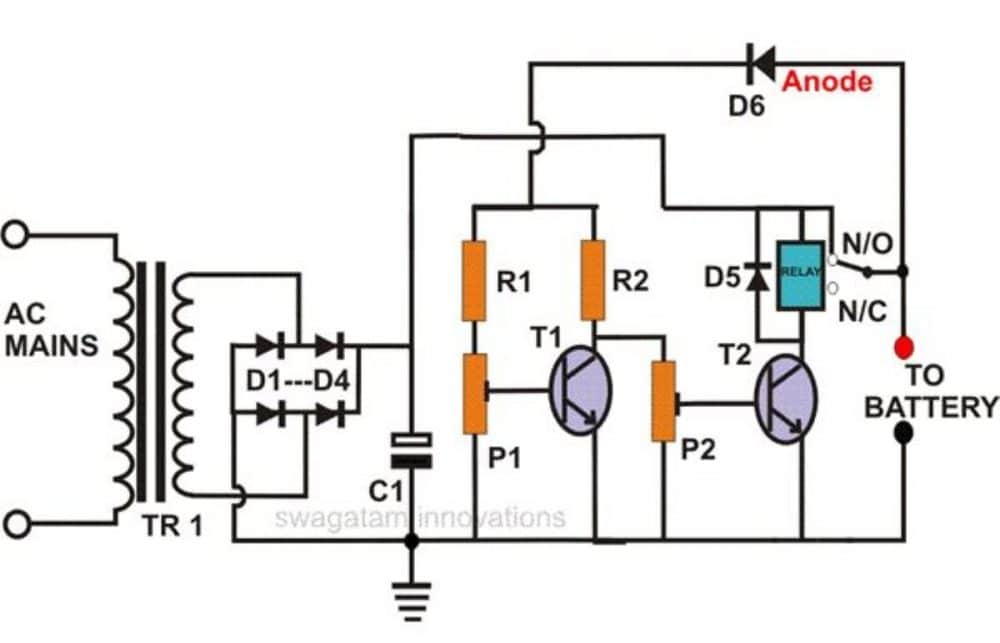
The following diagram shows the instructions which needs to be followed while setting-up the circuit with the desired cut-of thresholds, using a variable power supply unit:
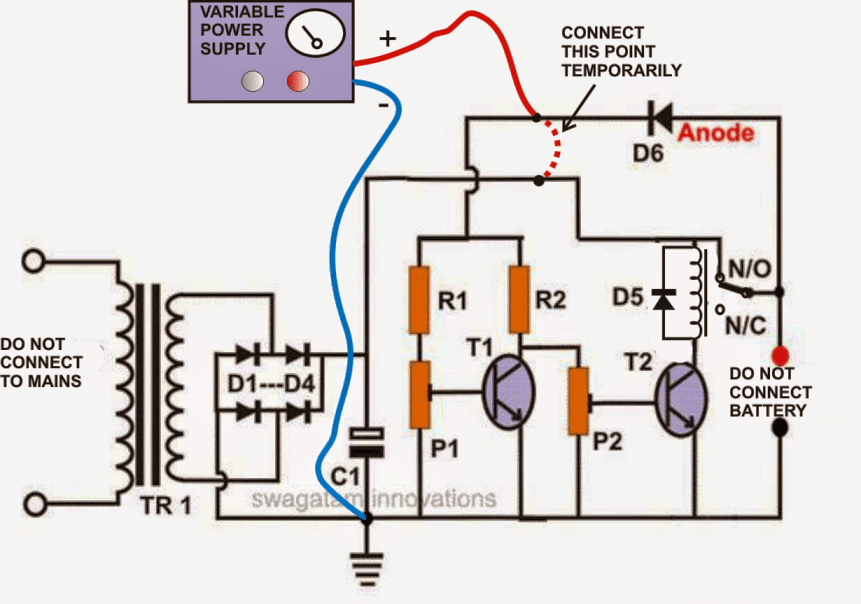
The above self-regulating battery charger circuit was successfully built and tested by Mr. Sai Srinivas, who is just a school kid but nevertheless has an immense interest in the field of electronics.
The following images were sent by him which displays his talent and intense dedication in the field.
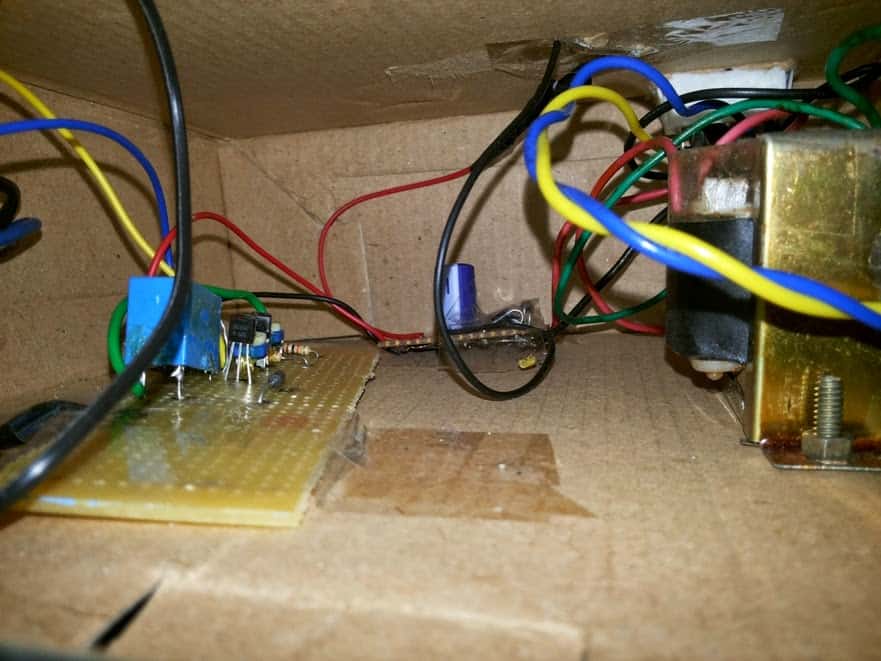
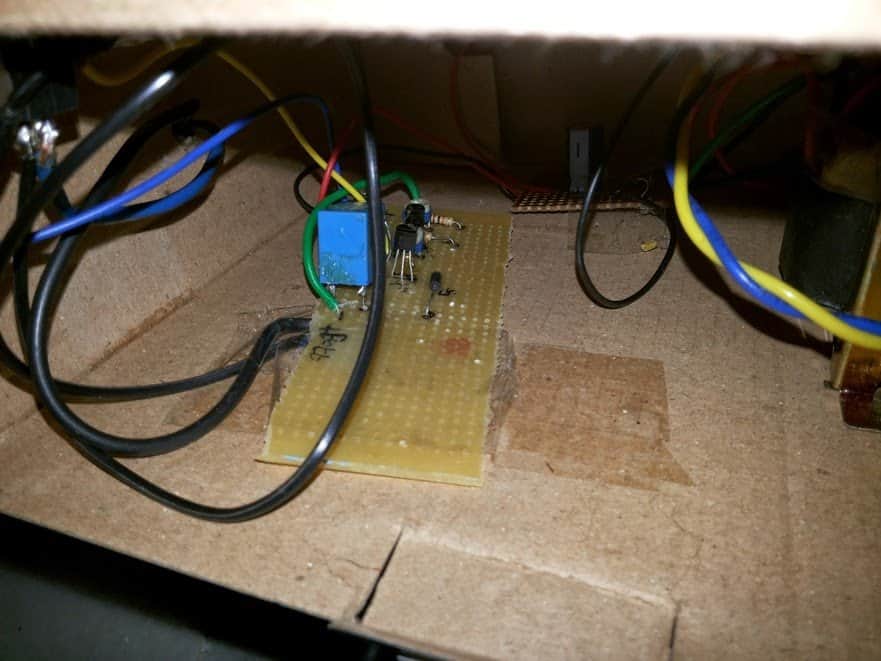
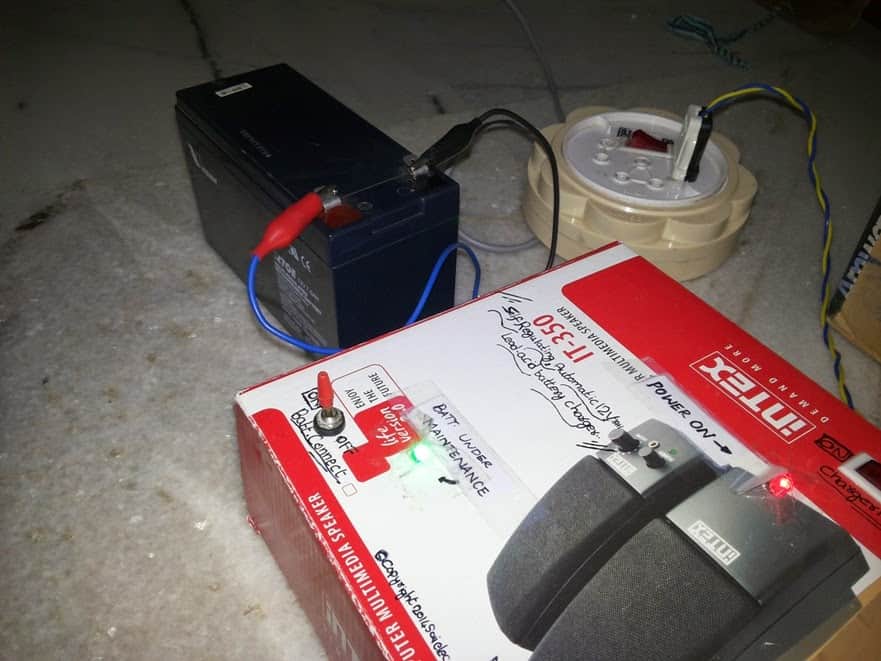
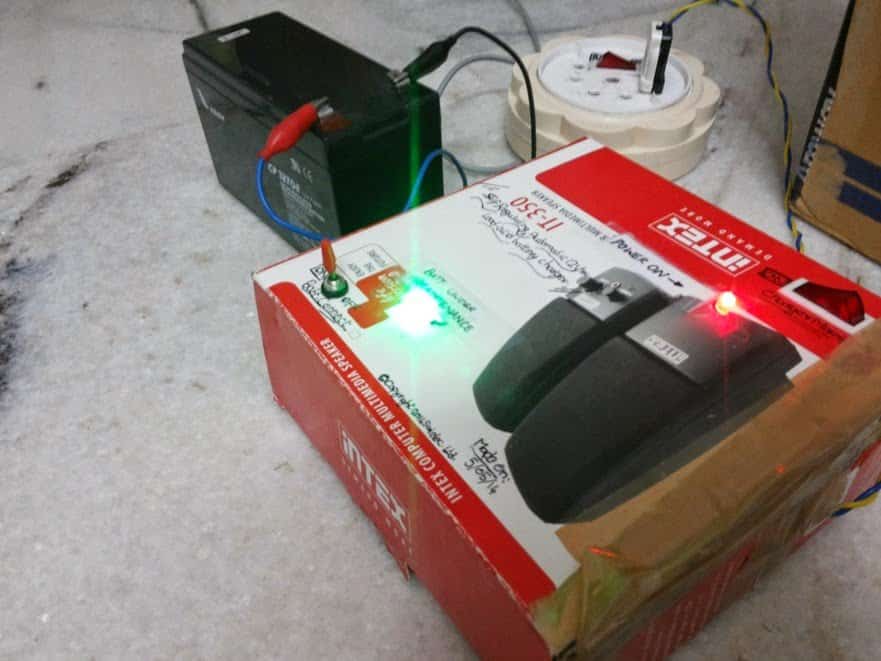
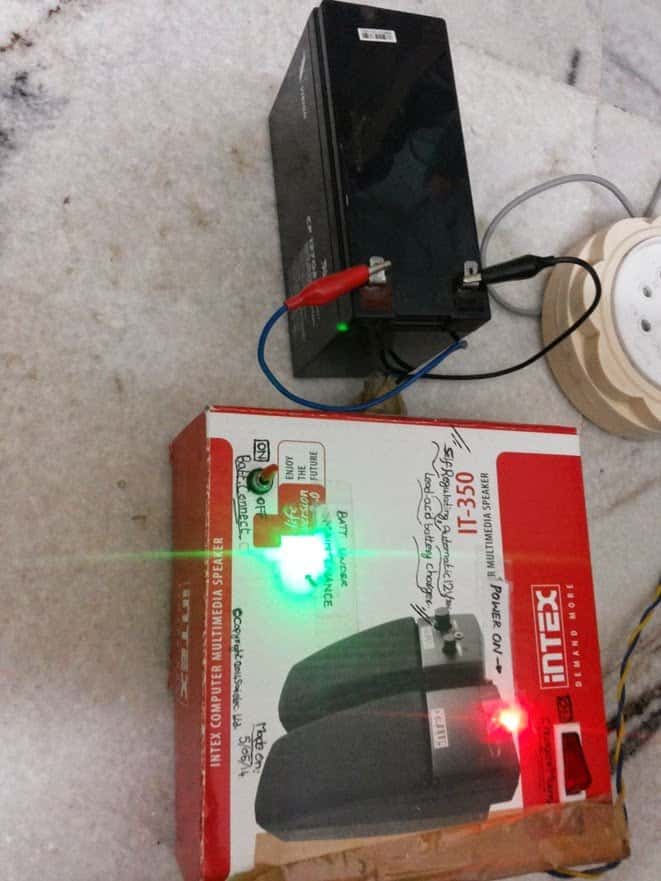
For One Shot Operation
If you want the above circuit to lock itself into a permanent cut off position when the battery is fully charged, then you may modify the design as shown below:
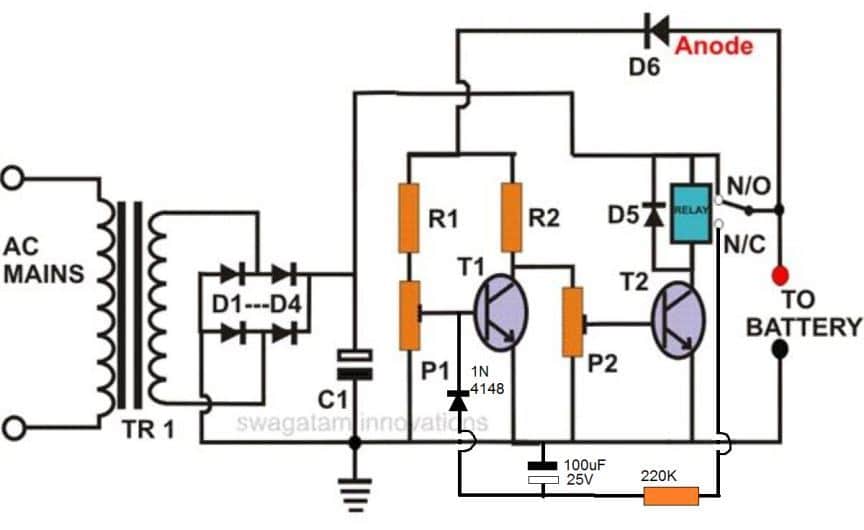
Note: To ensure the relay does not latch itself quickly on power switch ON, always connect the discharged battery first across the shown terminals and then switch ON the input power.
In order to indicate the charging status of the battery, we can add a couple of LEDs to the above design, as shown below.
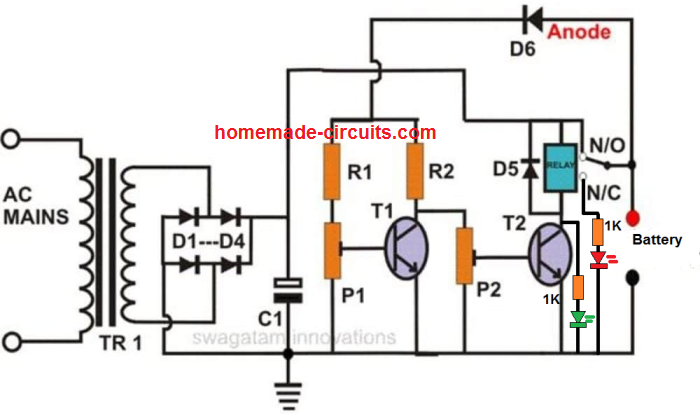
The above circuit was also successfully built and tested by one of the dedicated electronic enthusiasts from this blog. The following pictures verify the results:
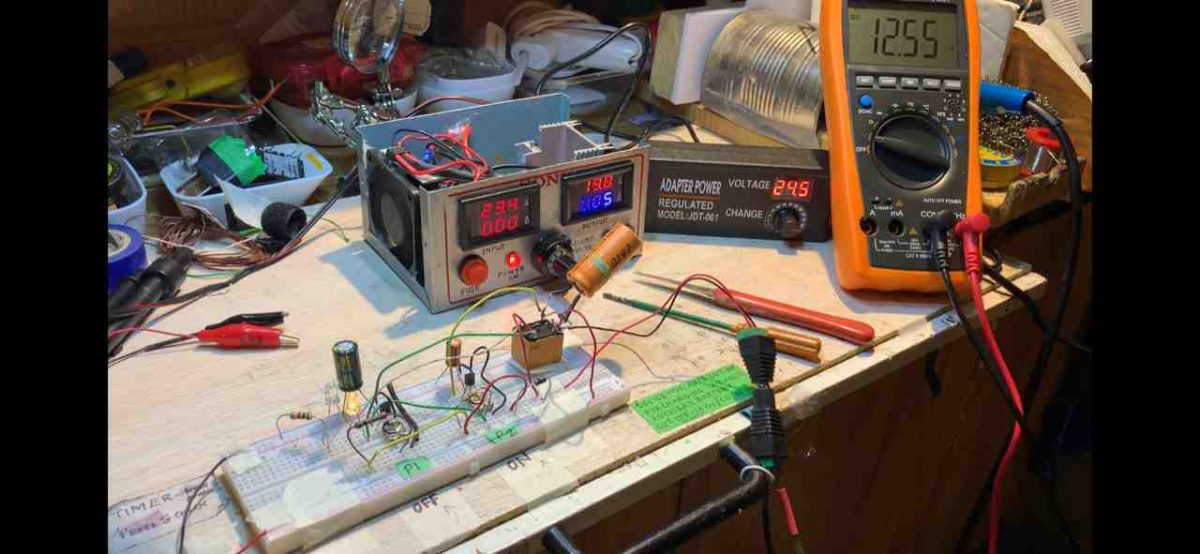
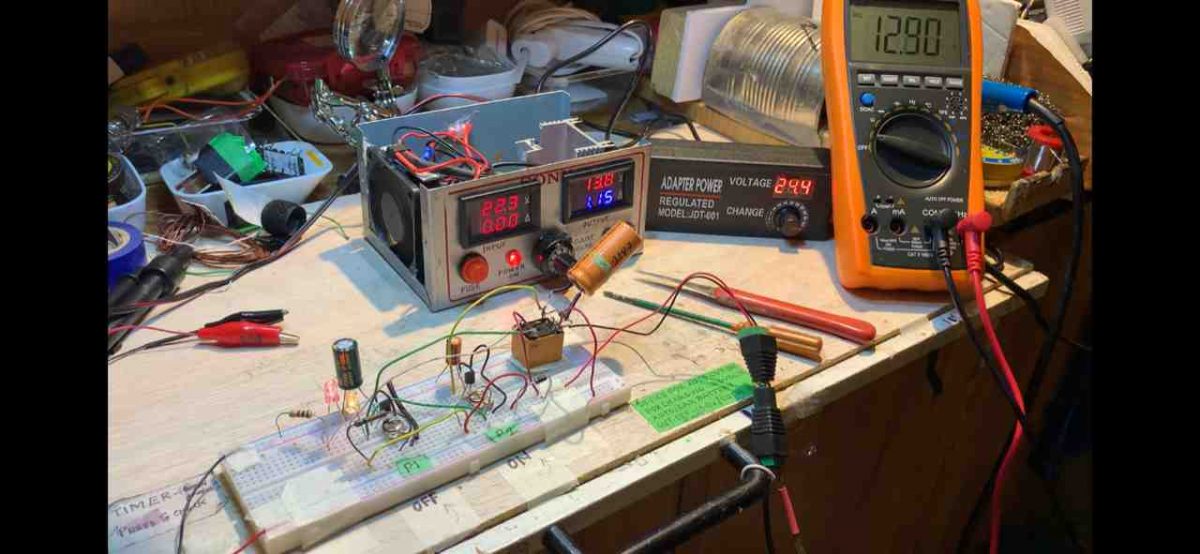
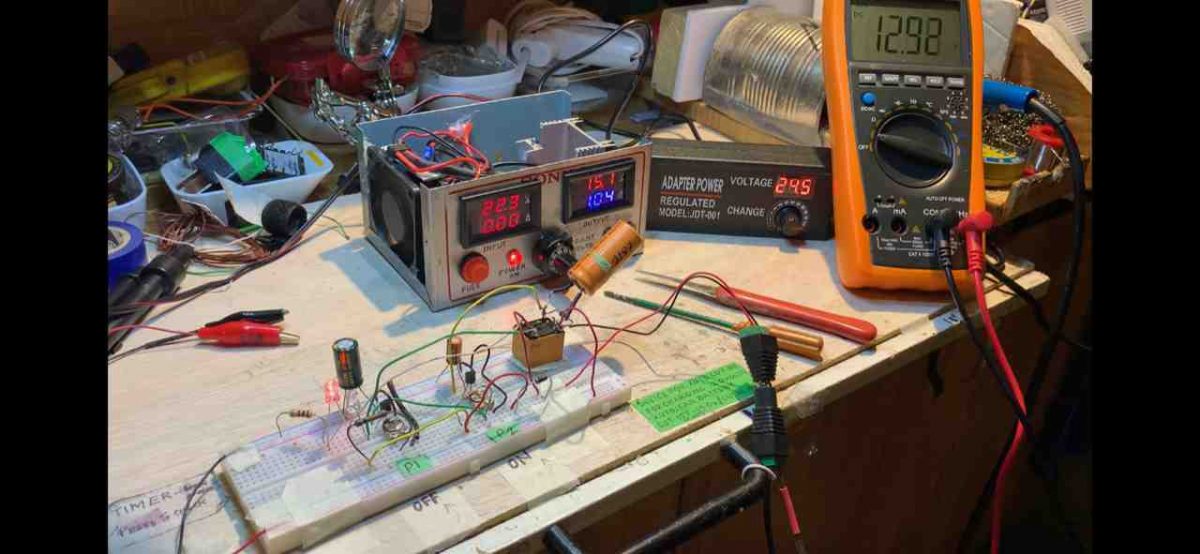
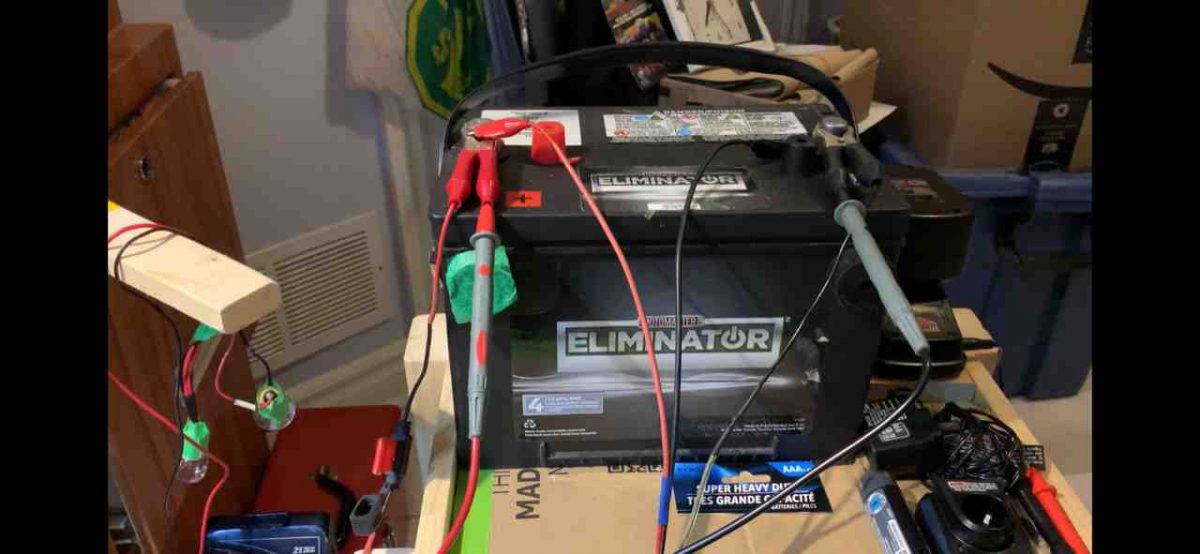
Warning: Make sure to test the preset setting thoroughly before you leave this application unattended. And be sure to use only 14V as the input supply for a 12V battery.
Formulas and Calculations
Full-Charge Cutoff Voltage
The voltage at which charging stops is calculated as:
Vcutoff = VBE(T1) + (P1 / (R1 + P1)) * Vsupply
For example:
Full-charge voltage (target) = 13.8 V
VBE(T1) = 0.7 V (for silicon transistors)
Vsupply = 15 V (after rectification and, filtering)
To achieve a cutoff of 13.8 V you can set the divider network:
13.8 = 0.7 + (P1 / (R1 + P1)) * 15
Rearranging for P1 / (R1 + P1):
P1 / (R1 + P1) = (13.8 - 0.7) / 15 = 13.1 / 15 ≈ 0.873
Choose R1 = 1 kΩ.
Then: P1 = 0.873 * (R1 + P1)
P1 = 0.873 * (1000 + P1)
P1 ≈ 687 / 0.127 = ~6.87 kΩ
Set P1 to approximately 6.8 kΩ.
Reactivation Voltage
The voltage at which charging restarts is calculated as:
Vreactivation = VBE(T2) + (P2 / (R2 + P2)) * Vsupply
For example:
Reactivation voltage = 12.6 V
VBE(T2) = 0.7 V (same assumption as above)
Vsupply = 15 V
To achieve a reactivation voltage of 12.6 V:
12.6 = 0.7 + (P2 / (R2 + P2)) * 15
Rearranging for P2 / (R2 + P2):
P2 / (R2 + P2) = (12.6 - 0.7) / 15 = 11.9 / 15 ≈ 0.793
Choose R2 = 1 kΩ.
Then: P2 = 0.793 * (R2 + P2)
P2 = 0.793 * (1000 + P2)
P2 ≈ 793 / 0.207 = ~3.83 kΩ
Set P2 to approximately 3.9 kΩ.
Relay Activation Current
The current needed to activate the relay is:
Irelay = Vcoil / Rcoil
For example:
Vcoil = 12 V (relay coil voltage)
Rcoil = 400 Ω (typical relay coil resistance)
Irelay = 12 / 400 = 0.03 A (30 mA)
Filter Capacitor Value
The filter capacitor smooths the DC and is calculated as:
C1 = Iload / (2 * f * DeltaV)
For example:
Iload = 1 A (charging current + circuit consumption)
f = 50 Hz (mains frequency)
DeltaV = 2 V (acceptable ripple voltage)
C1 = 1 / (2 * 50 * 2) = 1 / 200 = 0.005 F = 5000 µF
Choose C1 = 4700 µF or 6800 µF... for sufficient filtering.
Hysteresis Voltage
The hysteresis prevents frequent relay switching and is calculated as:
V_hysteresis = V_cutoff - V_reactivation
For example:
V_cutoff = 13.8 V
V_reactivation = 12.6 V
V_hysteresis = 13.8 - 12.6 = 1.2 V